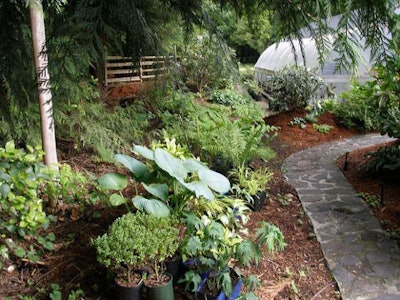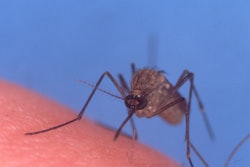 The types and placement of plants are key in both traditional landscaping and in planning an edible landscape.
The types and placement of plants are key in both traditional landscaping and in planning an edible landscape.Photo: www.jbbardot.com
It seems clear that edible landscaping is more than a passing trend, so landscape contractors may want to do a little homework on the practice. Why take a pass when a client asks about adding a vegetable garden next to the area where you’ve installed a flower garden?
It’s certainly reasonable to expect the skills involved in the professional installation of ornamental plants to be similar to the know-how needed to plant foodstuffs alongside them. In other words: You can do this.
Along with specific information on plot preparation for vegetable gardens, proper seed depth and the like, be prepared to impress your client with the fundamentals of “companion planting” – that is, choosing edible plants that complement one another in various ways. While the plant combinations you choose for your landscaping projects are probably based almost exclusively on aesthetics, the combinations for edible plants are strictly utilitarian. A few of the basics of companion planting are outlined below.
In elementary school, you may have heard about the “three sisters”: corn, beans and squash. When planted close together, the beans put nitrogen into the soil, corn provides a place for the beans to grow up and the large squash leaves block sunlight from reaching the ground, thus helping to control weeds. Many plants, in fact, work together to help one another grow. Some plants repel insects, providing organic pest management; others repel weeds, functioning as a sort of natural herbicide.
Bear in mind, however, the effectiveness of companion planting can take time. Certain protective botanicals must be planted several seasons in advance to be truly effective.
Here are some tips from the JB Bardot blog’s essay on companion planting:
- Protect carrots by planting them with leeks to repel both carrot and onion flies. The flies will be deterred and will not lay their eggs, enabling yields to increase significantly.
- Plant radishes and kohlrabi with lettuce to repel earth flies, which don’t like the smell of lettuce and will leave.
- Aphids are notorious for injuring plants (and driving gardeners crazy). To repel aphids, plant nasturtiums, in both annual and perennial varieties, around broccoli. Also, plant bunches of chives among sunflowers and tomatoes to discourage aphid infestations.
- Ladybugs are aphids’ natural enemies and are excellent organic pest managers. Did you know you could order ladybugs in bulk online or buy them from gardening centers? To reduce the aphid population in your garden, try releasing a healthy army of ladybugs.
- Asparagus and tomatoes complement one another and the vigor of each is improved when they’re placed in close proximity. Consider placing a row of asparagus between two rows of tomato plants.
- Beans and potatoes perform well together for organic pest control. Planting bush beans with potatoes in alternating rows protects the spuds from the Colorado potato beetle and the beans from the Mexican bean beetle.
- Broccoli and other cruciferous vegetables belonging to the cabbage family, such as Brussels sprouts or collard greens, do well when planted with celery, dill, peppermint, sage and rosemary, as well as potatoes, onions and beets.
- Sometimes, using a biological border around your garden can be effective. Repel moles with a border of castor beans, mice with a border of daffodils and yarrow makes a wonderful border for an herb garden, as it encourages the growth of essential oils in the herbs.
- Rabbits, though exceedingly cute, can be a huge problem. Onions repel rabbits and can be inter-planted with peas, beans, lettuce and cabbage to deter them.
- Finally, if raccoons are a problem, plant corn and pumpkins together so that the large pumpkin leaves grow around the base of the corn stalks. Cayenne pepper sprinkled on the corn silk will also act as a deterrent.
If your clients are determined to add edible plants to the landscape, be sure to remind them that some plants have poisonous parts, so it’s important to keep unattended young children away from the garden.









